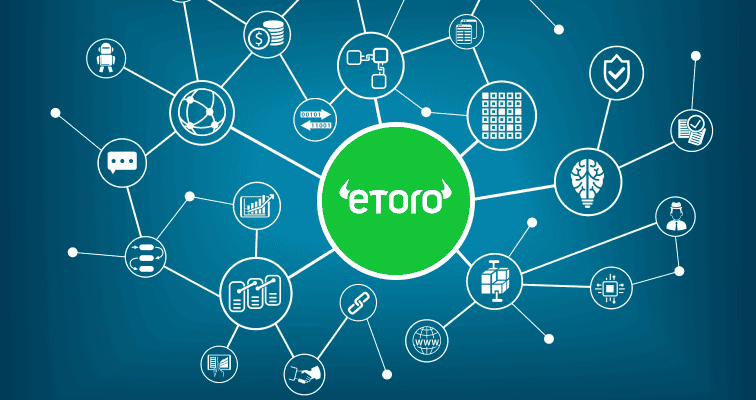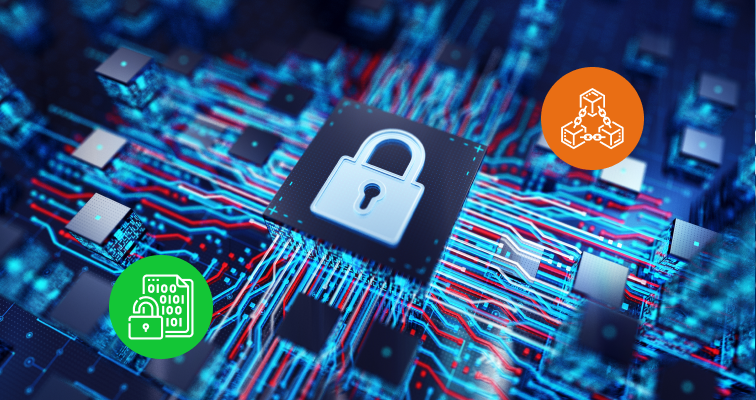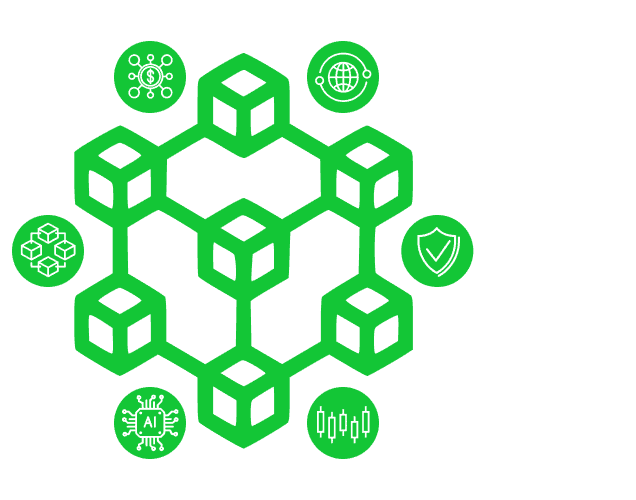Blockchain and cryptocurrencies are closely related, as blockchain is the underlying technology that underpins most cryptocurrencies. Blockchain technology has the potential to revolutionize several industries by introducing transparency and efficiency into various applications.
What Is Blockchain Technology?
By definition, a blockchain is an immutable, distributed digital ledger. Put more simply, a blockchain is a digital record of transactions or data. This data cannot be altered and is stored in multiple places on a computer network.
The immutability, or unchangeable nature of the ledger, means that it is always accurate, while the distributed aspect helps to protect the network from malicious attacks.
“Just as the internet upended how we share information, blockchain has the potential to revolutionize how we exchange value, transfer ownership, and verify transactions.”
JPMorgan
How Does Blockchain Work?
Data is stored on the ledger in a “block”, which essentially functions as a container of information. Blocks have a specific storage capacity, and when one is filled, it is linked to the previous block and a timestamp is generated.

Over time, as more blocks are created, a chain of data is formed, hence the term “blockchain”.
Blocks: These are clusters of data that function as links in a chain. Blocks contain two important numbers: nonces and hashes. Nonces are 32-bit whole numbers that are generated as soon as a block is created. Hashes are 256-bit numbers used to identify a specific block’s data, almost like a digital fingerprint.
Once a block is complete, its nonce generates a hash, and the block is considered signed and permanently bound to those numbers. This makes the block, and the data contained within it, cryptographically secure.
Nodes: These are devices — computers or servers in the network — that are able to participate in a blockchain. Nodes determine whether the data in a blockchain is valid, using a set of rules agreed on by the network. Any actions made must be approved by the majority of the blockchain’s remaining nodes.
For example, if a node creates a new block, it is sent to every other node on the network to validate and confirm that it has not been altered. This agreement is called a “consensus” and helps to explain why blockchains are so secure.
Tip: Blockchain is not a crypto or a programming language — it is a technology.
How Do Blockchains Achieve Consensus?
There are different ways for blockchains to achieve consensus. The primary two consensus mechanisms are

Proof of Work (PoW)
Proof of Work was the first system used to validate blocks in a blockchain, and is the protocol used by Bitcoin and, previously, Ethereum. PoW uses mining to create new blocks. Miners, or validators, must compete to find the correct nonce-hash combination of a particular block, which functions like a digital key.
The first person to find the correct nonce-hash, using computational power and advanced software, validates it and permanently records the data onto the ledger. The successful validator receives a small amount of the blockchain’s native crypto as a reward.
Proof of Stake (PoS)
There are different types of Proof of Stake blockchains. Most commonly, a PoS consensus mechanism involves node operators offering crypto as collateral. This collateral is usually the crypto native to that blockchain, and the process is referred to as “staking”.
Those who have staked crypto are entered into a lottery for the chance to validate the next block in the chain.
“A blockchain is a digital record of transactions or data. This data cannot be altered and is stored in multiple places on a computer network.”
Blockchain and Crypto
Tip: Historical blockchain transactions are anonymized. This makes it impossible to trace specific transactions back to the sender or receiver.
Cryptos are designed to be secure, decentralized and transparent. Blockchain technology enables all three of these things.
| Trait | Explanation |
|---|---|
| Secure | Blockchain is based on consensus and cryptography, making information about crypto transactions almost impossible to tamper with. |
| Decentralized | Blockchains are trustless, meaning that all crypto transactions must be verified by a majority of network participants. Most cryptos are, therefore, not run by a central point of control, like fiat currencies. |
| Transparent | It is possible to view and trace all historical crypto transactions on a blockchain, making them fully accessible and auditable. |
Is Blockchain Safe?
No technology is ever fully secure. However, a blockchain has the potential to be safer than traditional networks. Every block has a unique address and a link to the previous block in the chain, making them easily traceable and hard to tamper with.

Final Thoughts
Understanding blockchain is an important part of learning about cryptos and other cryptoassets. While it’s complicated, it’s clear that blockchain technology offers numerous benefits and will continue to do so.
Whether you’re interested in protecting your data, removing control from traditional banking institutions or increasing financial transparency, blockchain has the potential to change the way that we store, record and utilize data in the future.
To learn more about blockchain technology and cryptos, visit the eToro Academy.
FAQs
- How is blockchain used?
-
Blockchain technology allows a network of participants to share data without fear of it being tampered with or altered. Primarily, blockchains are used to store data from monetary transactions, but it does have other potential uses.
Blockchain can be integrated with banks to speed up transaction processing times. It can store healthcare and property records securely, track and authenticate the origins of food products, and facilitate a tamper-proof voting system.
- Who invented blockchain?
-
Blockchain technology was first conceptualised in 1990 by Stuart Haber and Scott Stornetta. The pair wanted to solve the problem of digital document authentication, and wrote a paper called How to Timestamp a Digital Document, demonstrating how a timestamp verification system would work. This process was expanded upon in 2009 in the Bitcoin whitepaper Bitcoin — A Peer to Peer Electronic Cash System, written by Satoshi Nakamoto.
- What is decentralized finance?
-
Decentralized finance, frequently referred to as DeFi, describes the shift away from traditional financial systems. DeFi is enabled by decentralized technologies, such as blockchain, and aims to create a universally accessible economy that is owned and operated by the public, rather than financial institutions.
This information is for educational purposes only and should not be taken as investment advice, personal recommendation, or an offer of, or solicitation to, buy or sell any financial instruments.
This material has been prepared without regard to any particular investment objectives or financial situation and has not been prepared in accordance with the legal and regulatory requirements to promote independent research. Not all of the financial instruments and services referred to are offered by eToro and any references to past performance of a financial instrument, index, or a packaged investment product are not, and should not be taken as, a reliable indicator of future results.
eToro makes no representation and assumes no liability as to the accuracy or completeness of the content of this guide. Make sure you understand the risks involved in trading before committing any capital. Never risk more than you are prepared to lose.


